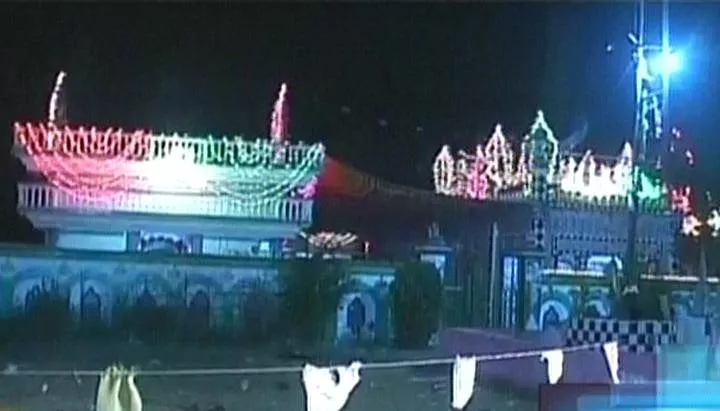Pandemic woes: Thousands go hungry as almonries shut doors
Coronavirus-induced closure of shrines has deprived humans and animals alike of their daily bread
KARACHI:Under the façade of a raging urban metropolis, spirituality has always remained a vital part of Karachi’s social fabric.
The coastal city, which is home to more than 20 million people, houses over 341 registered and unregistered shrines; including the eternal resting place of one of Sindh’s earliest saints.
These sanctums, which until March of 2020, were be thronged by tens and thousands of devotees every day, also functioned as some of the city’s biggest almonries responsible for feeding millions.
However, owing to restrictions induced by the pandemic, closure of shrines has meant that all who relied on its meal centres for shelter and sustenance, have since been deprived of their daily bread.
According to Syed Mohammad Abrar Al-Anbiya, a spiritual figure associated with the shrine of Qutb Shah Alam, the concept of Langar (alms) exists at the very heart of shrine culture.
“Until Covid-19, we had never gone a day without some devotee distributing langar among the indigent, who would routinely line up by the shrine’s almonry. But now, since devotees are only allowed to say fatiha at the shrine’s gate and leave, the concept of langars has also died down,” he told.
Although, in the last year-and-a-half, shrines have been able to open doors between successive lockdowns, it has been difficult to breathe life into the once vibrant culture that employed thousands and offered sustenance to millions.
It is common to see a food centre or catering business located close to a shrine. Per Anbiya, these businesses depend on the shrine’s pilgrims and devotees, who buy food from them and donate to the shrine’s almonry.
Read Auqaf dept restrained from charging shrines, mosque-goers
“Some pilgrims also bring their own food items, the most popular among which are plates of biryani, pulao, chickpea rice, kheer and halwa.”
However, humans are not the only beings fed at these meal centres. It is also common for pilgrims to offer langar to the animals and birds who camp outside the shrine or dot the coastal skies. This tradition had merited the opening of several birdfeed stores close to the shrines.
“But since people have remained absent at shrines, our stores have gone without business and the birds without food,” remarked Ahmed Saeed, a birdfeed seller.
On the other hand, speaking in the regard Ahmed Dawood, who is a devotee of a local shrine, said that covid-19 has not wiped out the believers’ yearning for spirituality, but certainly dampened it to a significant extent.
He told that pilgrims still visit the shrines and distribute langar, albeit at a much smaller scale compared to the grandiosity of better times. “Small-scale langars still take place. People bring packets of food from their home and distribute among the needy.”
Pappu, who runs a food centre close to Ghaib Shah's shrine in Kemari, said that the closure of these holy sites has had a severe impact on the business.
Previously, he told, a single visitor or pilgrim would happily spend anywhere between Rs5,000 to Rs15,000 towards financing a langar. But now, since the few who manage to visit the shrines prefer to bring their home-cooked langar, food centres like Pappu’s have been left in doldrums.
“Most people employed in businesses associated with shrines are now considering a switch towards something more reliable,” the caterer told The Express Tribune.


COMMENTS
Comments are moderated and generally will be posted if they are on-topic and not abusive.
For more information, please see our Comments FAQ